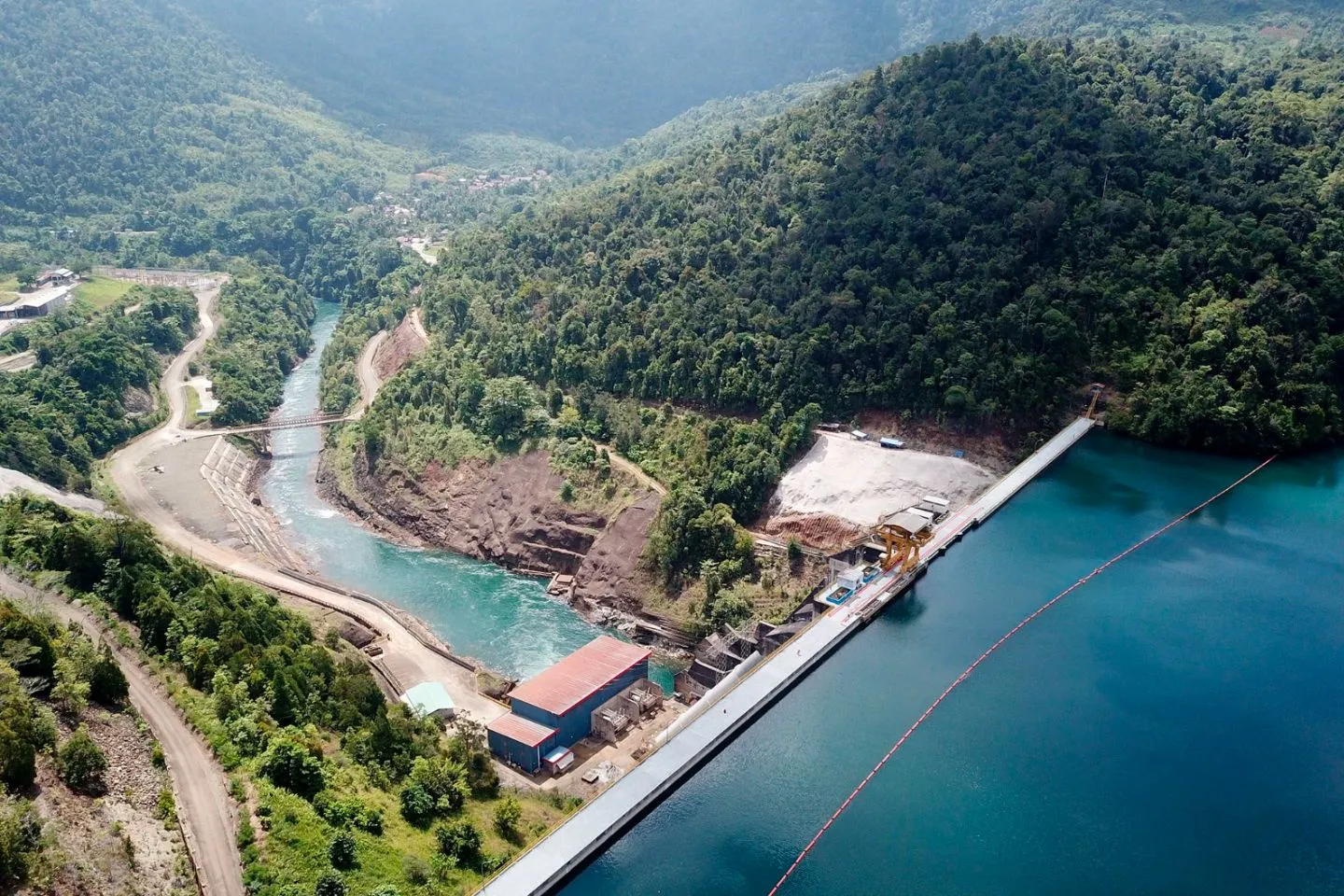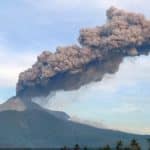Liga Asuransi – Dear risk takers, how are you? I hope your business is doing well.
As always, this site will keep focusing on the discussion about risk management and insurance. This time we will explore the main risk that threatens the hydropower industry which is a landslide. Because the topic of this discussion area is complex and details, the discussion will be in 3 articles, so please continue reading the next articles so can you get the whole picture of the risks.
If you are interested in this article, please share it with your friends so they can understand as much as you do.
Overall, hydropower in Indonesia’s energy mix aligns with the country’s goals of achieving sustainable, reliable, and environmentally friendly energy generation while promoting economic growth and energy security.
Hydropower holds significant importance in Indonesia’s energy mix for several reasons.
Renewable Energy Source:
Hydropower is a renewable energy source that relies on the natural flow of water in rivers and dams. As Indonesia seeks to reduce its reliance on fossil fuels and lower greenhouse gas emissions, hydropower plays a crucial role in providing clean and sustainable energy.
Energy Security:
Indonesia faces energy security challenges due to its reliance on imported fossil fuels. Hydropower offers a domestic and reliable energy source that is not subject to international oil and gas price fluctuations, enhancing the country’s energy security.
Cost-Effective Energy Generation:
Once hydropower infrastructure is in place, it offers relatively low operational and maintenance costs. This can lead to stable energy prices and reduced reliance on expensive imported fuels.
Reduced Carbon Emissions:
Hydropower is a clean energy source that produces minimal greenhouse gas emissions. Its expansion helps Indonesia meet its environmental and climate change goals by reducing carbon emissions from the energy sector.
Diverse Energy Portfolio:
Diversifying the energy mix with hydropower helps Indonesia reduce its dependence on coal and other fossil fuels. A diversified energy portfolio contributes to greater resilience in the face of supply disruptions or price fluctuations.
Rural Electrification:
Hydropower projects often involve the construction of dams and power plants in remote or rural areas. This not only provides electricity to these underserved regions but also stimulates economic development and improves living standards.
Potential for Large-Scale Generation:
Indonesia has significant untapped hydropower potential, given its numerous rivers and topographical diversity. The development of larger hydropower projects can contribute to the country’s growing energy demand.
Balancing Energy Supply:
Hydropower’s ability to quickly adjust its output makes it valuable for grid stability and peak demand management. It can complement intermittent renewable sources like solar and wind.
THE SUSCEPTIBILITY OF INDONESIAN HYDROPOWER PLANTS TO LANDSLIDES
The purpose of the article is to comprehensively explore the risks associated with landslides in Indonesian hydropower plants and to present effective mitigation strategies. This article aims to raise awareness about the potential challenges and vulnerabilities that hydropower plants in Indonesia face due to landslides and to provide valuable insights into how these risks can be proactively managed and minimized.
By offering a detailed examination of both the risks and mitigation strategies, the article seeks to inform stakeholders, including hydropower operators, government authorities, and environmental organizations, and empower them to make informed decisions that enhance the safety, sustainability, and resilience of hydropower generation in Indonesia.
GEOLOGICAL AND GEOGRAPHICAL FACTORS
Indonesian hydropower plants are vulnerable to landslides due to a combination of geological and geographical factors. These factors create conditions that increase the likelihood of landslides in regions where hydropower plants are often located. Here are the key geological and geographical factors contributing to this vulnerability:
Tectonic Activity:
Indonesia is located on the Pacific Ring of Fire, a seismically active region with numerous tectonic plate boundaries. Earthquakes are common, and they can trigger landslides in mountainous areas where hydropower plants are typically situated.
Mountainous Terrain:
Many hydropower plants in Indonesia are built in mountainous or hilly regions. The steep slopes and rugged topography of these areas make them more susceptible to landslides, especially during heavy rainfall or seismic events.
Volcanic Activity:
Indonesia is home to numerous active volcanoes. Volcanic eruptions can not only disrupt the stability of slopes but also generate pyroclastic flows, which can have landslide-like effects, leading to the erosion and collapse of slopes.
Heavy Rainfall and Monsoons:
Many parts of Indonesia experience heavy rainfall and monsoon seasons. These climate patterns can saturate the soil, making it more prone to landslides, particularly in areas with inadequate drainage.
Erosion:
The combination of heavy rainfall and deforestation can lead to soil erosion. When natural vegetation is removed, soil becomes more vulnerable to erosion, reducing slope stability and increasing the risk of landslides.
Soil Types:
Certain soil types, such as loose sediments, clay, and volcanic ash, are inherently unstable. These soil types are found in various regions of Indonesia and can contribute to landslide susceptibility.
Siltation in Reservoirs:
Hydropower plants often have reservoirs that can accumulate sediment over time (siltation). This sediment can increase the weight of slopes surrounding the reservoir and make them less stable, increasing the risk of landslides.
Landslide History:
Some regions in Indonesia have a history of landslides, which indicates that the geological and geographical conditions in those areas are predisposed to such events.
Deforestation and Land Use Changes:
Deforestation and changes in land use, such as logging and agriculture, can significantly alter the stability of slopes. When natural vegetation is removed, the soil is more susceptible to erosion, leading to an increased risk of landslides.
HISTORICAL INSTANCES OF LANDSLIDE IMPACTING HYDROPOWER FACILITIES
In the following, we provide a general overview of past instances where landslides have impacted hydropower facilities in Indonesia. It’s important to note that these instances are based on information available up to that point, and there may have been more recent events. Here are a few examples:
Tangguh Landslide (2003):
In 2003, a massive landslide occurred near the Tangguh hydropower plant in West Java, Indonesia. This event caused significant damage to the plant’s infrastructure and led to the loss of life. Landslides were triggered by heavy rainfall and the mountainous terrain, which is prone to slope instability.
Pacitan Landslide (2017):
In 2017, a landslide occurred in Pacitan, East Java, damaging the hydroelectric power plant in the region. The landslide was attributed to heavy rainfall and geological factors. It disrupted power generation and required extensive repairs.
Mudik Landslide (2018):
In 2018, a landslide incident near the Mudik hydropower plant in Jambi, Sumatra, led to significant damage to the plant’s infrastructure. Heavy rainfall was a contributing factor, and the landslide affected the power generation capacity.
Kintamani Landslide (2020):
In 2020, a landslide in the Kintamani region of Bali, Indonesia, affected the flow of rivers that feed hydropower plants in the area. Landslides during the rainy season disrupted power generation and required repairs.
These historical instances of landslides impacting hydropower facilities in Indonesia highlight the real risks and vulnerabilities associated with the country’s geographical and geological characteristics. The mountainous terrain, seismic activity, heavy rainfall, and vulnerability to natural disasters make landslide events a concern for the operation and maintenance of hydropower plants in the region. To mitigate such risks, it’s crucial to implement effective monitoring, early warning systems, and engineering solutions that address slope stability and minimize the potential for landslides.
THE IMPACT OF LANDSLIDES TO THE PLANT’S INFRASTRUCTURE
Landslides in and around hydropower facilities in Indonesia can have severe consequences, affecting not only the infrastructure but also the environment and the energy supply. Here are the potential consequences of landslides:
Damage to Infrastructure:
Structural Damage: Landslides can cause significant physical damage to hydropower plants, including dams, powerhouses, penstocks, and other critical components. This damage may require extensive and costly repairs.
Roads and Access Routes: Landslides can block access roads and paths, making it difficult for maintenance crews to reach the site for necessary repairs, inspections, or emergency responses.
Transmission Lines: Landslides can also damage transmission lines, disrupting the transmission of generated power to the grid.
Environmental Impact:
Siltation: Landslides can introduce large volumes of soil, rocks, and debris into rivers and reservoirs. This siltation can reduce the capacity of reservoirs and negatively impact aquatic ecosystems.
Water Quality: The sudden introduction of sediment can affect water quality, posing risks to downstream users and ecosystems that rely on clean water sources.
Habitat Disruption: Landslides may disrupt natural habitats and ecosystems, potentially leading to the displacement of wildlife and damage to local flora.
Disruption of Power Generation:
Temporary Shutdown: Landslides can force the temporary shutdown of hydropower plants, resulting in a loss of electricity generation. This can have economic implications, especially if the plant is a major source of power for the region.
Energy Shortages: The disruption in power generation may lead to energy shortages in the affected area, impacting businesses, households, and essential services.
Public Safety Concerns:
Loss of Life and Property: Landslides can pose a direct threat to human life, causing casualties, injuries, and damage to homes and infrastructure in affected communities.
Evacuations: When landslides are imminent or have occurred, evacuation measures may be necessary to ensure the safety of the population living downstream or in the vicinity of the plant.
Economic Impact:
Repair Costs: Restoring infrastructure and conducting repairs can be a substantial financial burden for both the hydropower plant operator and the government.
Loss of Revenue: The interruption in power generation can lead to financial losses for the operator, and the broader economy may also be affected if there is a shortage of electricity.
Given these potential consequences, it’s essential for hydropower operators and relevant authorities to prioritize landslide risk assessment and mitigation measures to ensure the safety and reliability of these energy facilities and minimize the impacts on both the environment and society.
THE IMPORTANCE OF CONDUCTING A THOROUGH RISK ASSESSMENT
Conducting a thorough risk assessment is not only a best practice but often a legal and regulatory requirement for the safe and efficient operation of hydropower plants. It is a proactive measure that ensures the protection of people, assets, the environment, and the continuous supply of electricity while also contributing to the long-term sustainability of the facility.
Conducting a thorough risk assessment before designing or operating a hydropower plant is of paramount importance for several reasons:
Safety of Personnel and the Public:
The safety of those working at the hydropower facility and the surrounding communities is a primary concern. By identifying and understanding potential risks early, the necessary safety measures and protocols can be put in place to prevent accidents, injuries, and loss of life.
Asset Protection:
A risk assessment helps protect the significant financial investments made in building and maintaining hydropower infrastructure. It allows for the identification of potential risks that could lead to equipment damage, structural failures, and costly repairs.
Environmental Protection:
Hydropower plants are often located in environmentally sensitive areas. A comprehensive risk assessment can identify potential environmental impacts and enable the implementation of measures to minimize harm to ecosystems, water quality, and habitats.
Resource Optimization:
A thorough risk assessment can help in optimizing resource allocation. By understanding the risks and their potential consequences, operators can allocate resources effectively for risk mitigation, reducing unnecessary expenditure and improving cost-efficiency.
Regulatory Compliance:
Many countries have regulations and safety standards that hydropower facilities must adhere to. Conducting a risk assessment is often a regulatory requirement. Failing to comply with these regulations can lead to legal and financial penalties.
Operational Continuity:
Identifying and mitigating risks can prevent unexpected disruptions in power generation. This is crucial for maintaining a continuous and reliable energy supply, which is essential for both industrial and residential consumers.
Financial Planning:
Understanding the risks allows for better financial planning. Operators can budget for potential risks, including maintenance, repairs, and insurance costs. This helps in managing the financial stability of the facility.
Insurance and Liability:
Insurance providers often require detailed risk assessments before underwriting policies for hydropower plants. Demonstrating a proactive approach to risk management can lead to more favorable insurance terms and lower premiums.
Public Confidence:
Public perception and community support are essential for the smooth operation of hydropower plants. A thorough risk assessment and the implementation of effective mitigation strategies can enhance public confidence in the safety and sustainability of the facility.
Sustainability and Long-Term Viability:
To ensure the long-term viability of hydropower facilities, it is essential to identify and address risks that could impact operations over time. This includes addressing factors like climate change, sedimentation, and geological stability.
KEY PARAMETERS AND VARIABLES CONSIDERATION
A comprehensive landslide risk assessment involves the evaluation of various key parameters and variables to understand the potential risks and consequences associated with landslides. Here are the critical factors to consider in a landslide risk assessment:
Geological Conditions:
Geological formation and rock types: Assess the geology of the site, including the types of rocks and sediments present, as different materials have varying levels of stability.
Fault lines and tectonic activity:
Evaluate the proximity of fault lines and the potential for seismic activity, as earthquakes can trigger landslides.
Topography:
Slope angle and gradient: Analyze the steepness of slopes, as steeper slopes are generally more susceptible to landslides.
Elevation and relief:
Consider the elevation of the area and the overall relief of the terrain.
Hydrological Factors:
Precipitation patterns:
Examine historical rainfall data to understand seasonal variations and heavy rainfall events that can saturate the soil.
Water table levels:
Assess the depth of the water table, as high water levels can weaken slopes.
River proximity:
Evaluate the proximity of rivers and reservoirs, as changes in water levels can impact slope stability.
Soil and Subsurface Conditions:
Soil types: Identify the types of soils present and assess their stability and cohesion.
Soil moisture content: Evaluate soil moisture levels, as saturated soils are more susceptible to landslides.
Bedrock depth: Determine the depth and characteristics of bedrock, as it can influence slope stability.
Land Use and Human Activities:
Deforestation and land clearing: Assess the impact of land use changes, such as deforestation, which can increase the risk of landslides.
Mining and excavation: Consider human activities that can alter the landscape and affect slope stability.
Climate and Weather Patterns:
Seasonal variations: Understand the seasonal variations in weather and climate, which can influence the risk of landslides.
Extreme weather events: Evaluate the potential for cyclones, typhoons, and heavy storms that can trigger landslides.
Historical Landslide Data:
Analyze historical records of landslides in the area to identify patterns and potential risk zones.
Document previous landslides near or within the project site to assess their causes and consequences.
Vegetation:
Vegetative cover: Assess the presence of vegetation, as it can stabilize slopes. Conversely, the removal of vegetation can increase the risk of landslides.
Infrastructure and Development:
Proximity to infrastructure: Determine the proximity of critical infrastructure such as roads, bridges, and buildings that could be impacted by landslides.
Development and construction: Consider nearby construction activities and developments that may disturb the landscape.
Early Warning Systems:
Evaluate the availability and effectiveness of early warning systems for landslides in the area, including monitoring equipment and sensors.
Mitigation Measures:
Document any existing or planned mitigation measures in place, such as retaining walls, drainage systems, or slope stabilization techniques.
WHY DO YOU NEED AN INSURANCE BROKER TO ARRANGE INSURANCE FOR THE HYDROPOWER PLANT?
Engaging an experienced insurance broker is highly beneficial when arranging insurance for a hydropower plant due to the complex and specialized nature of the insurance process in the energy and infrastructure sectors. Here are several reasons why an experienced insurance broker is essential:
Industry Expertise: Experienced insurance brokers have in-depth knowledge of the energy and infrastructure sectors, including hydropower. They understand the unique risks associated with such projects and are familiar with industry-specific insurance products and coverage needs.
Risk Assessment: Insurance brokers can assess the specific risks of a hydropower plant comprehensively. They understand the complexities of landslide risks, operational disruptions, equipment breakdown, and other potential issues. This expertise helps in securing adequate coverage.
Access to Specialized Markets: Experienced brokers have access to a wide network of insurance providers, including those who specialize in energy and infrastructure. This allows them to source competitive quotes and tailor insurance solutions to the project’s needs.
Customized Coverage: Insurance brokers work closely with clients to develop customized insurance packages that address the unique risks of a hydropower plant. They ensure that the coverage aligns with the project’s size, location, and specific risk factors.
Cost-Effective Solutions: Brokers can negotiate on behalf of the client to obtain favorable terms and pricing. They help clients strike a balance between cost-effective coverage and comprehensive protection.
Claims Assistance: In the unfortunate event of a claim, experienced brokers can assist in the claims process. They advocate on behalf of the client to ensure that claims are handled efficiently and fairly.
Risk Management: Brokers often provide risk management advice to clients, helping them implement preventive measures that can reduce the likelihood of insurance claims and lower overall insurance costs.
Regulatory Compliance: Insurance brokers stay up to date with local and international regulations related to insurance in the energy sector. This ensures that clients remain compliant with legal requirements.
Savings in Time and Resources: Engaging a broker saves time and resources that would otherwise be spent researching insurance options, negotiating with insurers, and managing the administrative aspects of insurance.
Long-Term Relationships: Experienced brokers develop long-term relationships with their clients, working with them on multiple projects. This continuity ensures that the insurance coverage evolves to meet changing needs.
Peace of Mind: With an experienced broker handling insurance matter, clients have peace of mind knowing that they have expert guidance and support in managing their risk exposure.
In summary, an experienced insurance broker plays a pivotal role in securing the right insurance coverage for a hydropower plant. They provide industry-specific knowledge, access to specialized markets, customized solutions, and claims support. This expertise ultimately helps protect the investment and ensure the long-term success of the project.
One of the experienced insurance brokers in Indonesia focusing on Hydropower Plant Insurance is L&G Insurance Broker.
For your insurance needs in Indonesia, call L&G Insurance Broker now!
—
LOOKING FOR INSURANCE PRODUCTS? DON’T WASTE YOUR TIME AND CONTACT US RIGHT NOW
L&G HOTLINE 24 HOURS: 0811-8507-773 (CALL – WHATSAPP – SMS)
website: lngrisk.co.id
E-mail: customer.support@lngrisk.co.id
—
Mitigasi Risiko Longsor Di Plta Indonesia: Strategi Dan Solusi – Bagian 2













